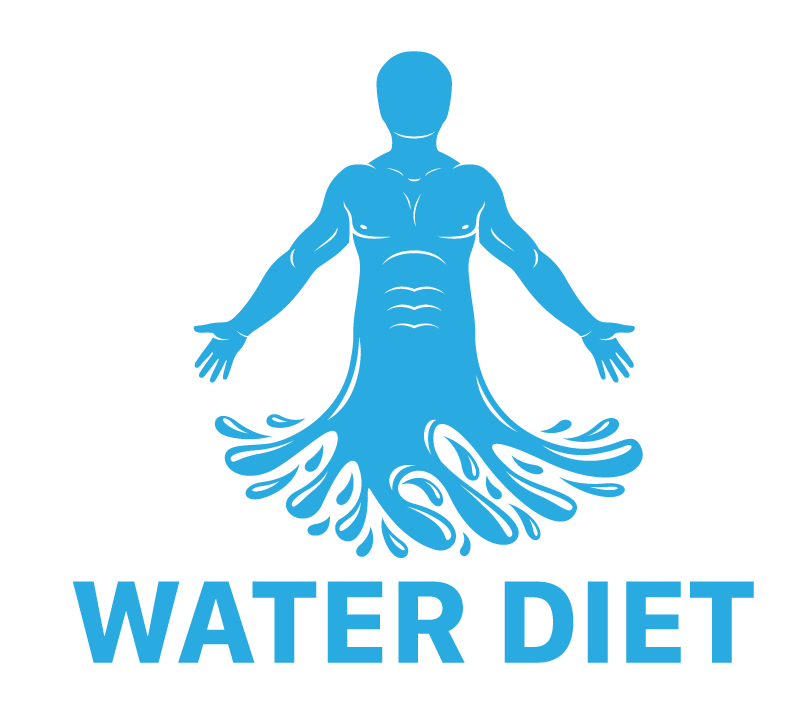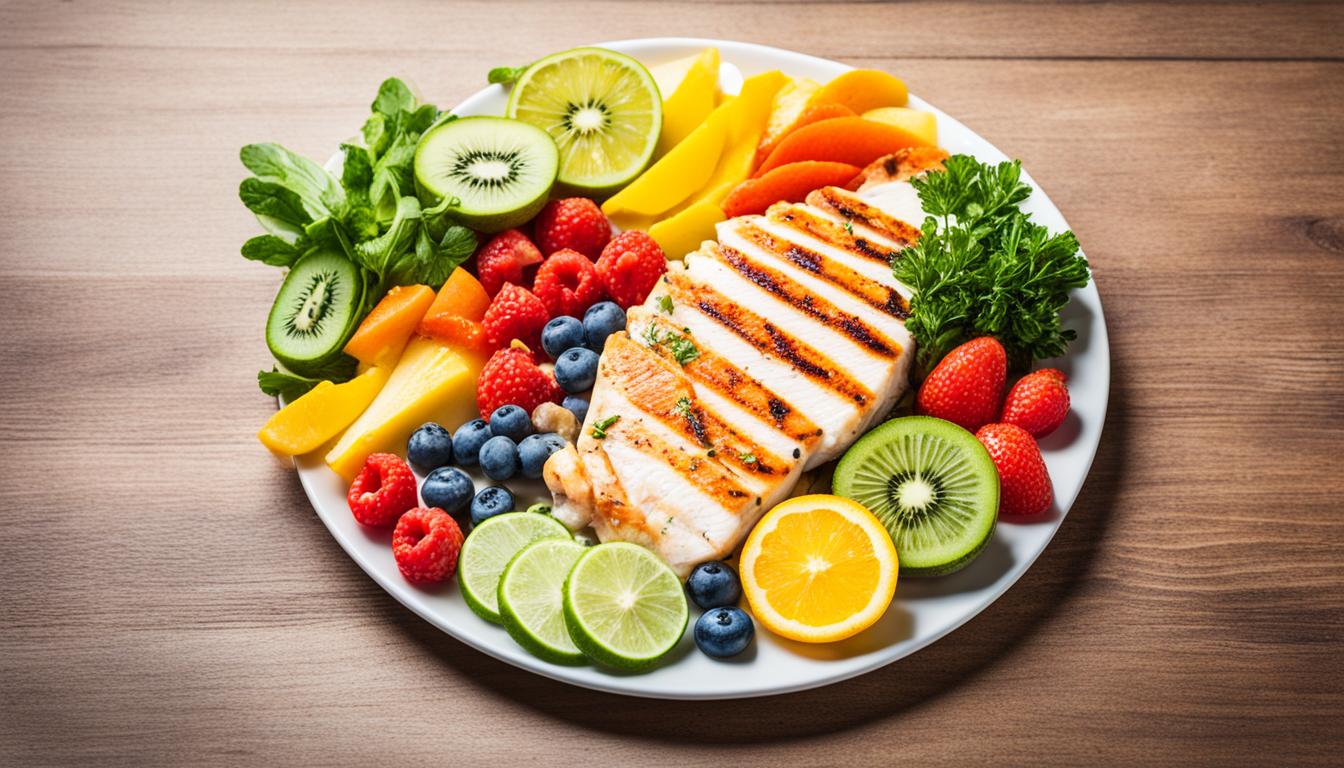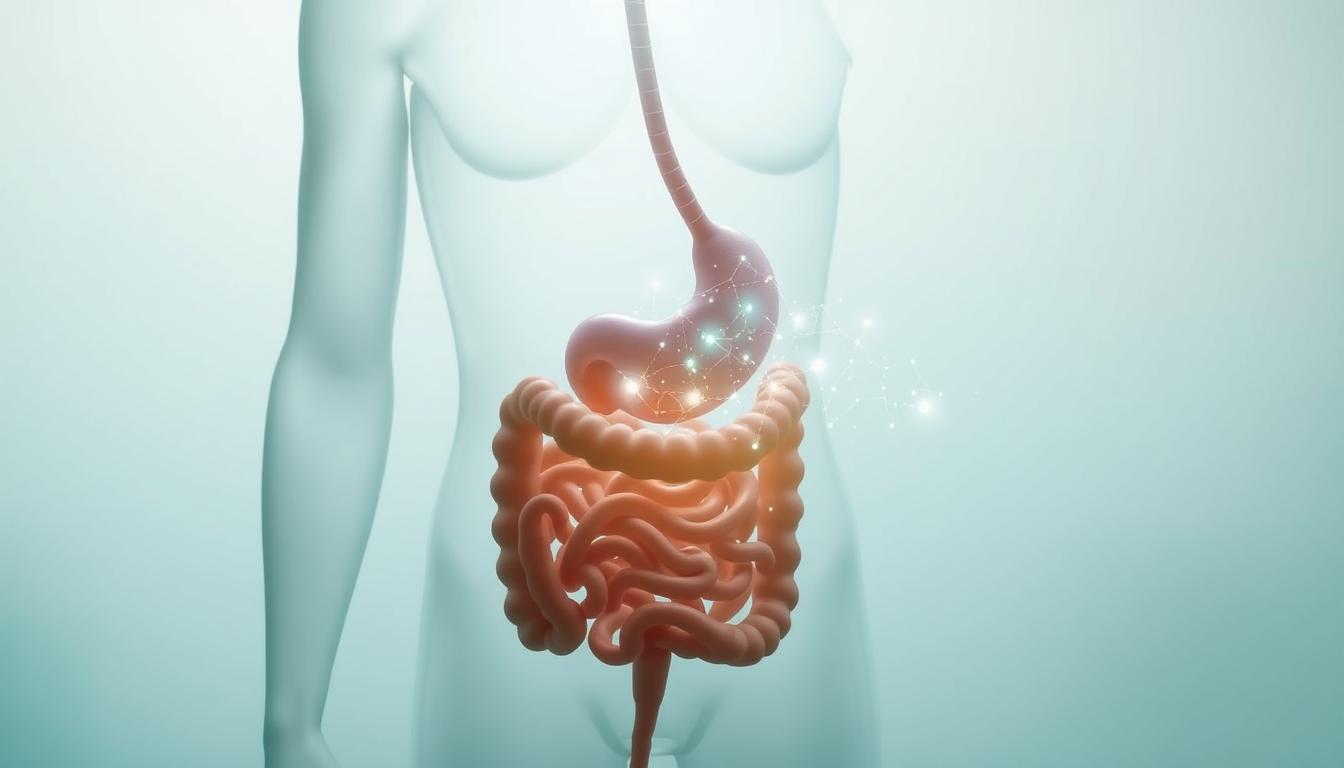The water diet is becoming popular for losing weight and boosting health. It’s a low-calorie plan where you only drink water for 24 to 72 hours. But, it’s important to know the risks and limits of this diet.
Before trying any new diet, like the water diet, talk to a doctor first. Experts say the risks usually outweigh the benefits of water fasting at home. This diet isn’t a good long-term way to lose weight and can be risky, especially for people with health issues.
This article will cover the water diet meal plan, including what to eat and avoid during a fast. We’ll look into its benefits and risks for healthy eating and losing weight. By understanding the science, you can decide if this diet is good for you.
Key Takeaways
- The water diet involves consuming only water for 24 to 72 hours to promote weight loss and potential health benefits.
- Consult with a healthcare provider before starting the water diet, as it may pose health risks, especially if attempted without medical supervision.
- The water diet is not a sustainable approach to weight loss and may lead to nutrient deficiencies and other health issues.
- Potential benefits of medically supervised water fasting diets are limited, and most experts agree that the risks outweigh the benefits when attempted at home.
- Focus on a balanced, nutrient-rich diet and regular exercise for sustainable weight loss and overall health improvement.
Understanding the Water Diet
The water diet has become popular for weight loss and better health. It means eating mostly water for a while to cut calories and help the body detox. But, it’s important to know the risks and limits of this diet.
What is a Water Fast?
A water fast means not eating or drinking anything except water for a certain time. These fasts usually last 24 to 72 hours, but some people fast longer with a doctor’s watchful eye. People fasting only drink water, skipping all other calories and nutrients.
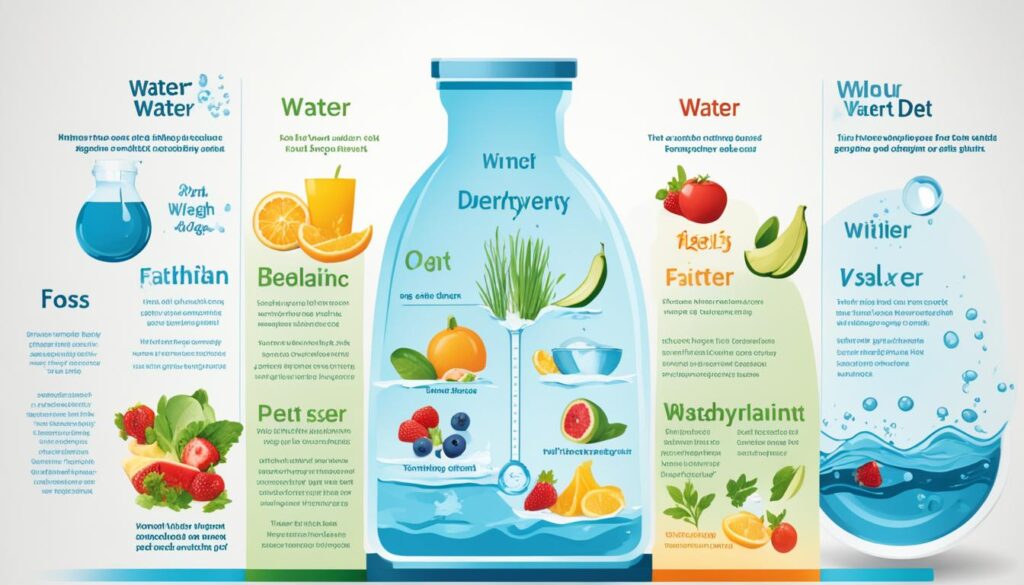
One way to try water fasting is the 16/8 method. This means eating only during an eight-hour window each day and drinking water the rest of the time. This way, you get some fasting benefits while still eating solid food when you’re hungry.
Benefits and Risks of Water Fasting
Studies show water fasting could have health perks. It might lower the risk of diseases like cancer, heart disease, and diabetes. It could also help with autophagy, which is breaking down and recycling old cells to reduce inflammation and improve cell function.
Some research says water fasting can lower blood pressure and cholesterol levels, and reduce inflammation. A 2022 study found big drops in blood pressure after a 10-day fast on water only. It might also make insulin and leptin work better, helping with metabolism and weight control.
But, water fasting has risks too. It can lead to not getting enough nutrients because the body misses out on vitamins, minerals, and other important substances. Dehydration is also a big worry, as you lose more fluids and electrolytes. Signs of dehydration include feeling dizzy, tired, and nauseous.
| Potential Benefits | Potential Risks |
|---|---|
| Weight loss | Nutrient deficiencies |
| Reduced inflammation | Dehydration |
| Improved insulin sensitivity | Orthostatic hypotension |
| Promotion of autophagy | Worsening of certain medical conditions |
| Lower blood pressure | Muscle loss |
Water fasting isn’t right for everyone. It’s not good for kids, teens, pregnant or breastfeeding women, people with certain health issues, seniors over 75, or those with eating disorders. If you’re thinking about trying a water fast, talk to a doctor first to make sure it’s safe for you.
What to Eat on the Water Diet
Following the water diet means knowing what foods and drinks are okay. The diet includes fasting with only water, then slowly adding solid foods back. It’s key to follow the rules about what you can and can’t eat for a safe and effective diet.
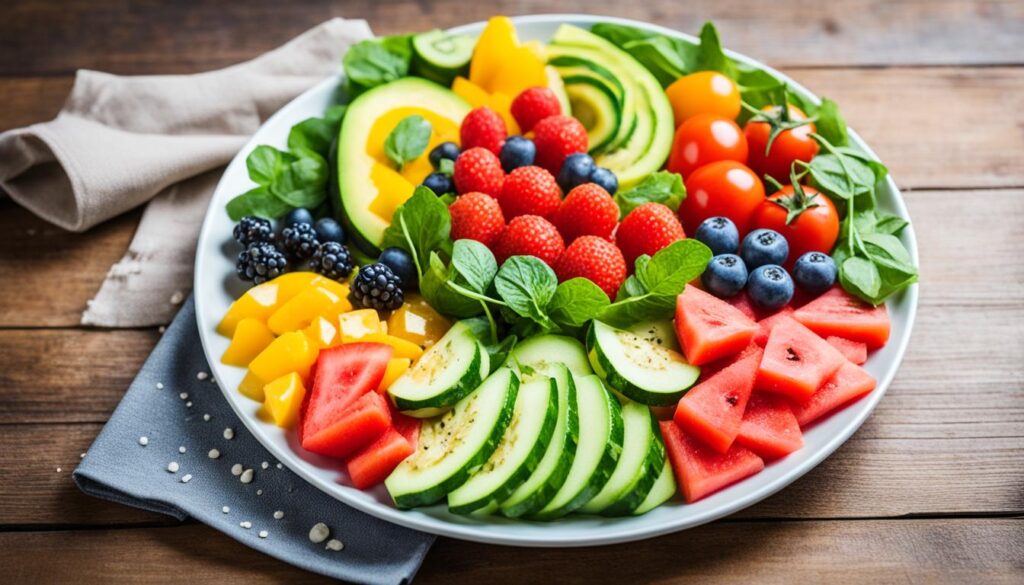
Recommended Foods
During the fasting part, which can last from 24 to 72 hours, only water is allowed. Drink at least 2 to 3 liters of mineral water a day to replace lost minerals. After fasting, start with easy-to-digest foods like:
- Fresh fruits and vegetables
- Lean proteins like fish, chicken, and tofu
- Whole grains such as brown rice, quinoa, and oats
- Healthy fats from sources like avocados, nuts, and seeds
Foods to Avoid
While fasting, don’t eat fruits, veggies, grains, lean meats, beans, legumes, nuts, seeds, dairy, or healthy oils. Staying away from solid food and calorie drinks keeps the fast effective.
Even when not fasting, some foods can undo the water diet’s benefits. Avoid these foods:
- Ultra-processed and packaged snacks
- Deep-fried and high-fat foods
- Sugary drinks and beverages
- Alcohol and caffeinated drinks
Studies show that people who drank water before a meal lost about 5 pounds more than those who skipped water.
Stick to the allowed foods and drinks during and after the fast to make the most of the water diet. This can lead to better hydration, detox, and weight loss.
| Fasting Phase | Post-Fasting Phase |
|---|---|
| Water (2-3 liters per day) | Fresh fruits and vegetables |
| Lean proteins (fish, chicken, tofu) | |
| Whole grains (brown rice, quinoa, oats) | |
| Healthy fats (avocados, nuts, seeds) |
The Water Diet Meal Plan: What to Eat and What to Avoid
When planning meals on the water diet, focus on nutritional guidelines and make smart food choices. This helps your body during and after fasting. During a water fast, you don’t eat food, but staying hydrated is key for health.
After fasting, slowly start eating small amounts to avoid stomach issues and health problems. Experts suggest eating five small meals a day. Also, avoid processed foods that can be hard to digest.
Choose nutrient-rich, easy-to-digest foods when breaking your fast, such as:
- Fresh fruits and vegetables
- Whole grains
- Lean proteins like fish and legumes
- Healthy fats from sources like nuts and avocados
The Mediterranean diet is a great choice after a fast. It focuses on whole, minimally processed foods. These foods are full of nutrients to help your body recover.
Here’s a meal plan to ease back into regular eating:
| Meal | Food Choices |
|---|---|
| Breakfast | Fresh fruit, whole grain toast with avocado, or a smoothie made with leafy greens and almond milk |
| Snack | Raw vegetables with hummus or a small handful of nuts |
| Lunch | Quinoa salad with mixed vegetables and a light vinaigrette |
| Snack | Greek yogurt with berries or a piece of fresh fruit |
| Dinner | Grilled fish with steamed vegetables and brown rice |
Eat nutrient-rich, whole foods and drink plenty of water to help your body heal. Listen to your body and adjust your meals as needed to meet your nutritional needs.
Tips for Success on the Water Diet
Starting a water diet needs careful planning to be safe and effective. Follow these key tips to get the most out of your water fast and avoid risks.
Preparing for a water fast
Before you start, talk to a healthcare professional to find out the best duration for you. They’ll give advice based on your health history and current condition. Also, slowly cut down on food before the fast to help your body adjust.
Staying Hydrated
It’s crucial to stay hydrated during a water fast. Drink 2-3 liters of water a day, like mineral water, to replace lost nutrients and support your body. Don’t do hard workouts during the fast as it can cause dehydration and strain. Instead, do gentle exercises like yoga or light walking to stay active and reduce stress.
Reintroducing Food Post-Fast
When you end your water fast, start eating again slowly and with small amounts. This helps avoid digestive problems and serious conditions like refeeding syndrome. Start with easy-to-digest foods like broths, soups, and soft fruits, then slowly move to solid foods over a few days. Eating five small meals a day can help your body get used to eating again.
| Tips for Success | Description |
|---|---|
| Consult with a Healthcare Professional | Determine the safest fasting duration based on your medical history and current health status |
| Stay Hydrated | Drink 2-3 liters of water daily, preferably mineral water, to replace lost nutrients |
| Avoid Strenuous Physical Activities | Focus on gentle exercises like yoga or light walking to maintain mobility and reduce stress |
| Reintroduce Food Slowly | Begin with easily digestible foods and gradually progress to more solid foods over a few days |
| Divide Food Intake | Consume five smaller meals a day to aid in the body’s adjustment to eating again |
Remember, the key to a successful water diet is careful preparation, maintaining hydration, and mindfully reintroducing food during the post-fast period. By prioritizing these aspects, you can optimize the potential benefits of a water fast while minimizing risks to your health and well-being.
Conclusion
Water fasting might have some health perks, like less inflammation and better blood sugar control. But, it’s important to be careful with this method. Trying water fasting without a doctor’s advice can be risky for your health.
Instead, eating a balanced diet full of important nutrients and staying active is safer and better for your health. This way, you can keep your body healthy and feel good.
Intermittent fasting could be a good choice for those interested in fasting. It lets you eat during certain times. Studies show it can improve your thinking, memory, heart health, and physical performance. It might also help with weight loss for people who are obese.
But, keep in mind that it might not stop weight gain or lead to big weight loss for everyone.
Finding a healthy lifestyle means picking what works for you. You might try water fasting, intermittent fasting, or just eat a diet full of nutrients. Always talk to a health expert before starting any new diet or fasting plan. This way, you can make sure it’s safe and right for you, considering your health and medical history.
